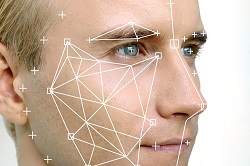Cutting-edge facial recognition goes mainstream
For millions of years, humans have communicated using facial gestures to express emotion and to send messages to others, even before the advent of speech. As faces still play a pivotal role in human communication, it is only natural for facial image processing to play a pivotal role in today’s high-tech environments. The EU-funded MMFP (Multimodal face processing) project coordinated by the Istanbul Technical University in Turkey has made great strides in this area. ‘We’ve focused on applications such as gamification, technology-enhanced learning, assistive systems, multimedia indexing and animation,’ says project researcher Dr Hazim Kemal Ekenel, Associate Professor at the University’s Department of Computer Engineering. In this vein, the project team developed a common framework to derive information from face images and maximised information extraction performance. It also made important progress benchmarking face processing under ambient conditions. One important step forward has been in exploiting convolutional neural networks (CNNs), artificial neural networks inspired by biological processes, which has successfully been used for analysing visual imagery. Award-winning technology for games and more ‘We’ve developed a face recognition system that exploits deep CNN representation and score normalisation for face recognition under mismatched conditions,’ notes Dr Ekenel. ‘The developed system ranked first in the International challenge on biometric recognition in the wild,’ he adds, referring to the first event of its kind under the International Conference on Biometrics. In effect, the project developed generic, fast and robust facial image processing algorithms that can handle several types of variations simultaneously and operate in real time under uncontrolled conditions. ‘The versatility, speed and robustness of the developed facial image processing approaches have enabled applications in a wide variety of real-world applications,’ says Dr Ekenel. Two such applications were achieved by the project team in the field of gamification, which represents an excellent opportunity to demonstrate the technology’s accuracy and robustness. ‘We built two proofs of concept: one is a paintball-like game that lets you target the opponent through facial recognition, and the other is an imitation game where you score by imitating facial expressions.’ Faces don’t lie about age and even taste In more technical terms, the team successfully furthered deep learning-based representation for face recognition under various conditions, including pose, illumination, misalignment and image degradations. It improved the technology in areas such as face de-identification, age estimation and gender classification. ‘We’ve also developed a facial expression recognition system that works on both static and dynamic representations,’ explains Dr Ekenel, ‘in addition to exploring innovative applications of facial image analysis such as visual estimation of taste appreciation and intelligent tutoring.’ A spin-off has already emerged out of the research lab that worked on the project. ‘We have also completed several industrial projects,’ reveals Dr Ekenel. All the project’s efforts were enhanced by international partners from 11 countries in America, Asia and Europe, highlighting the importance of the topic in today’s high-tech research circles. The new unified framework for deriving information from face images and the enhanced information extraction have already begun making applications that rely on face recognition smarter and more accurate. Thanks to these efforts, the future of these applications now looks brighter than ever.
Keywords
Facial recognition, facial image processing, MMFP, gamification, convolutional neural networks, biometrics







